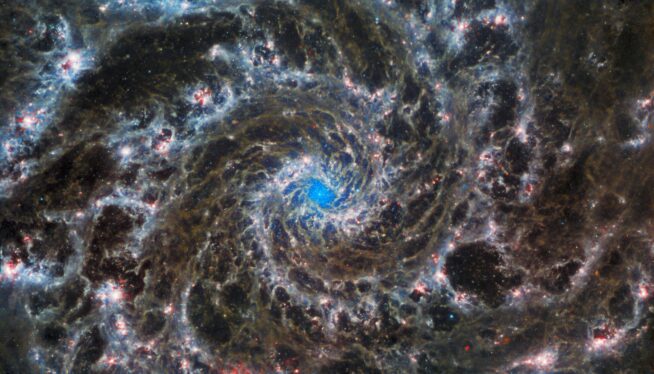Today, NASA published a new image of the Phantom Galaxy, also known as M74 and NGC 628. The James Webb Space Telescope (JWST) captured it. This isn’t the first time we’ve seen the Webb telescope send a picture of the Phantom Galaxy back. NASA previously published one in 2022.
Below is the 2022 image for comparison. Despite the different colors, it’s clear that both images are of the same galaxy.
Webb captured the older image using only its Mid-InfraRed Instrument (MIRI). Conversely, the new one combines data from MIRI and Webb’s Near-InfraRed Camera (NIRCam). This combination allowed scientists from the Feedback in Emerging extrAgalactic Star clusTers (FEAST) team to observe the Phantom Galaxy’s nurseries.
For the uninitiated, stellar nurseries are regions in space full of gasses and molecular clouds. They’re where stars and planets are born. For that reason, some people also refer to them as star-forming regions.
The FEAST team’s primary mission is to examine stellar feedback in locations outside the Milky Way galaxy while also observing the formation of stars. By looking at how much energy from stars pours out into the surroundings, scientists can better understand how stars come into being.
Combined data from Webb’s MIRI and NIRCam instruments allowed scientists to conclude that the spiral arms of the Phantom Galaxy are where stars are more actively forming in the celestial body. Thanks to NIRCam, the JWST can now also see hydrogen emission lines, which aren’t as affected by the dust and show where massive stars are newly formed.
The JWST continues to send images back for us to enjoy, courtesy of a 68GB SSD. For those interested in viewing more, the ESA/Webb site has many of them.
This article originally appeared on Engadget at https://www.engadget.com/science/space/webbs-latest-phantom-galaxy-image-sheds-light-on-stellar-feedback-153026022.html?src=rss




